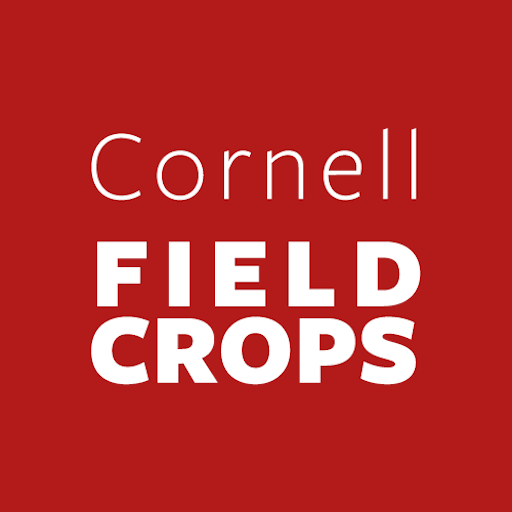Manuel Marcaida III1, Kirsten Workman1,2, and Quirine M. Ketterings1
1Cornell University Nutrient Management Spear Program (NMSP) and 2PRO-DAIRY
Introduction
Soil fertility often varies within a single field, impacting crop yield and efficiency of crop inputs. Grid soil sampling offers more detailed fertility information than whole-field sampling, enabling more targeted lime and nutrient applications. But is this added precision worth the investment and what grid size should be used? In collaboration with farmers and crop consulting firms, we analyzed the results of 20 New York corn silage fields (1149 total acres) with grid sample data at 0.5-, 1.0- and 2.5-acre resolution, to assess within-field variability in soil pH, phosphorus (P), and potassium (K) levels. Recommendations based on grid sampling were compared to those derived from conventional, whole-field, composite samples.
Key Findings
Grid sampling revealed substantial variability in soil nutrient levels
Although most fields had 2-8 (average 4) different soil series represented, soil series within a field all belonged to the same soil management group. However, each field showed a considerable range in pH, soil test P and soil test K (Figure 1). For some fields, grid sampling revealed low pH, P or K areas while for other fields, hot spots were identified (Figure 2).


Lime and fertilizer recommendations vary depending on soil nutrient variability
For lime and P, grid sampling increased the recommended amount of lime for corn in alfalfa rotations (rotation target pH of 7.0) for many of the fields (Figure 3). This suggests that grid sampling helped identify areas that were suboptimal in pH and/or P-deficient that would be overlooked with use of whole-field averages. In contrast, for several fields, grid sampling revealed areas with sufficient K, which could result in K fertilizer savings (Figure 3).

Grid sampling increased total fertilizer or lime recommendations for 12 out of 20 fields, discovering low-pH or soil test P and/or K deficiencies that would have been missed using whole-field averages. On the flip side, seven fields had lower lime and nutrient input costs with grid sampling because there was no need to apply lime and fertilizer in already optimally limed or fertilized areas within the fields.
Half-acre grid size provides more detailed fertility insights, but it is also more costly (both in sampling costs and analytical costs). A cost-effective long-term strategy is to start with high-resolution (0.5-acre) sampling to characterize soil fertility and establish fertility-based zones (such as low, medium, optimum, high, very high). In subsequent years, sampling can then be done per fertility zone at a lower grid resolution of 2.5 acre within each zone, significantly reducing costs while still maintaining the benefits of precision nutrient management. This approach aims to homogenize the field over time through targeted applications, potentially leading to more uniform soil conditions.
Conclusions
Grid soil sampling enables more precise fertilizer and lime application by identifying within-field nutrient variability. Although results of this study suggested that for many of the 20 fields, grid-based sampling added to the cost of production and crop input needs, it should be recognized that detection of deficient areas allows a farmer to address yield barriers. Whether grid sampling leads to higher costs or significant savings, the long-term value is in applying fertilizer and lime only where needed. A cost-effective approach could be to begin with high-resolution (0.5-acre) sampling to define zones of low, medium, optimum, high or very high fertility, followed by lower-resolution (e.g., 2.5-acre) sampling within each fertility zone in future years.
Full citation
This article is summarized from our peer-reviewed publication: Marcaida, M., K. Workman, and Q.M. Ketterings (2025). Implication of Soil Grid Sampling on Lime, Phosphorus, and Potassium Management of Corn. Agronomy Journal 117: e70074. https://doi.org/10.1002/agj2.70074.
Acknowledgments
The authors would like to thank the staff of Champlain Valley Agronomics, Western New York Crop Management Association, and participating farmers for field selection and sampling. Funding came from the Northern New York Agricultural Development Program, the New York Corn and Soybean Growers Association via the New York Farm Viability Institute, the New York State Department of Environmental Conservation and the New York State Department of Agriculture. This research was also supported, in part, by the intramural research program of the U.S. Department of Agriculture, National Institute of Food and Agriculture, Hatch 2021-22-210. The findings and conclusions in this publication have not been formally disseminated by the U.S. Department of Agriculture and should not be construed to represent agency determination or policy.

For questions about these results contact Quirine M. Ketterings at 607-255-3061 or qmk2@cornell.edu, and/or visit the Cornell Nutrient Management Spear Program website at: http://nmsp.cals.cornell.edu/.

